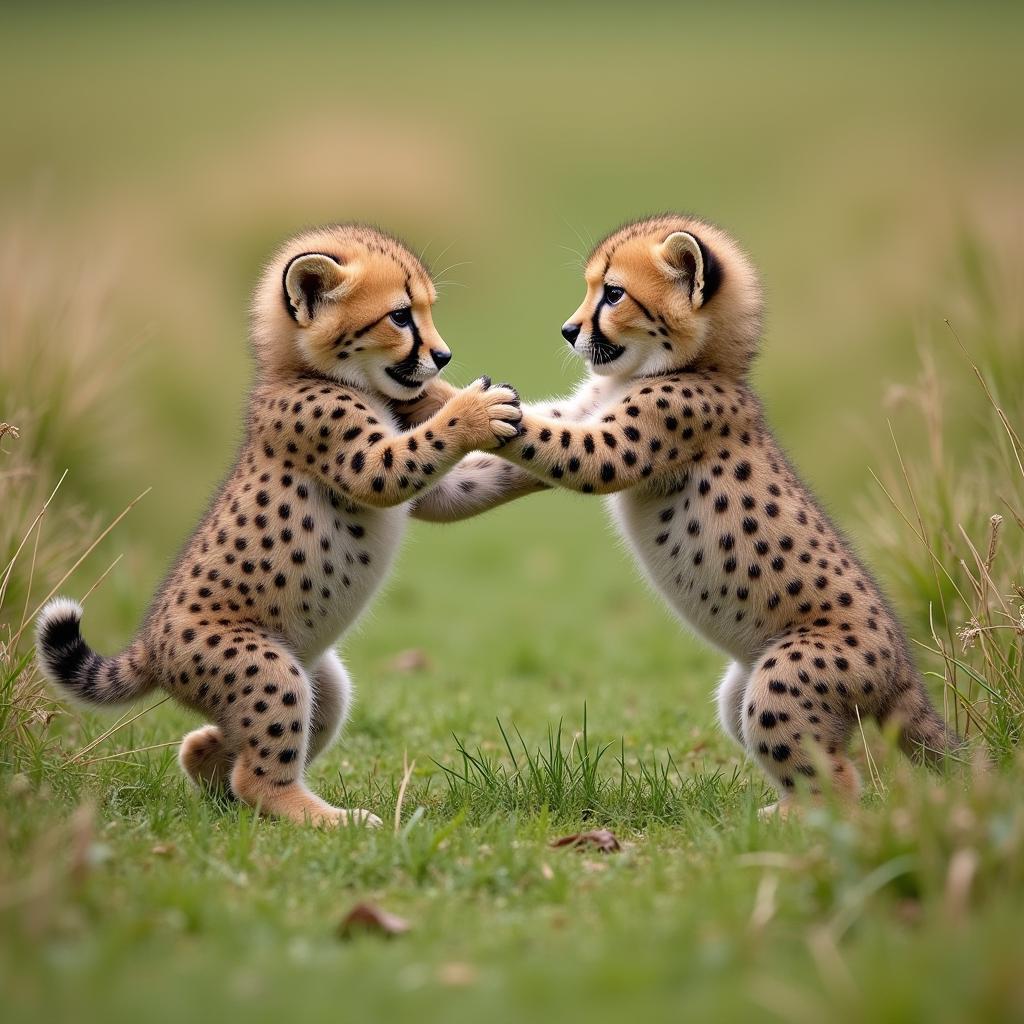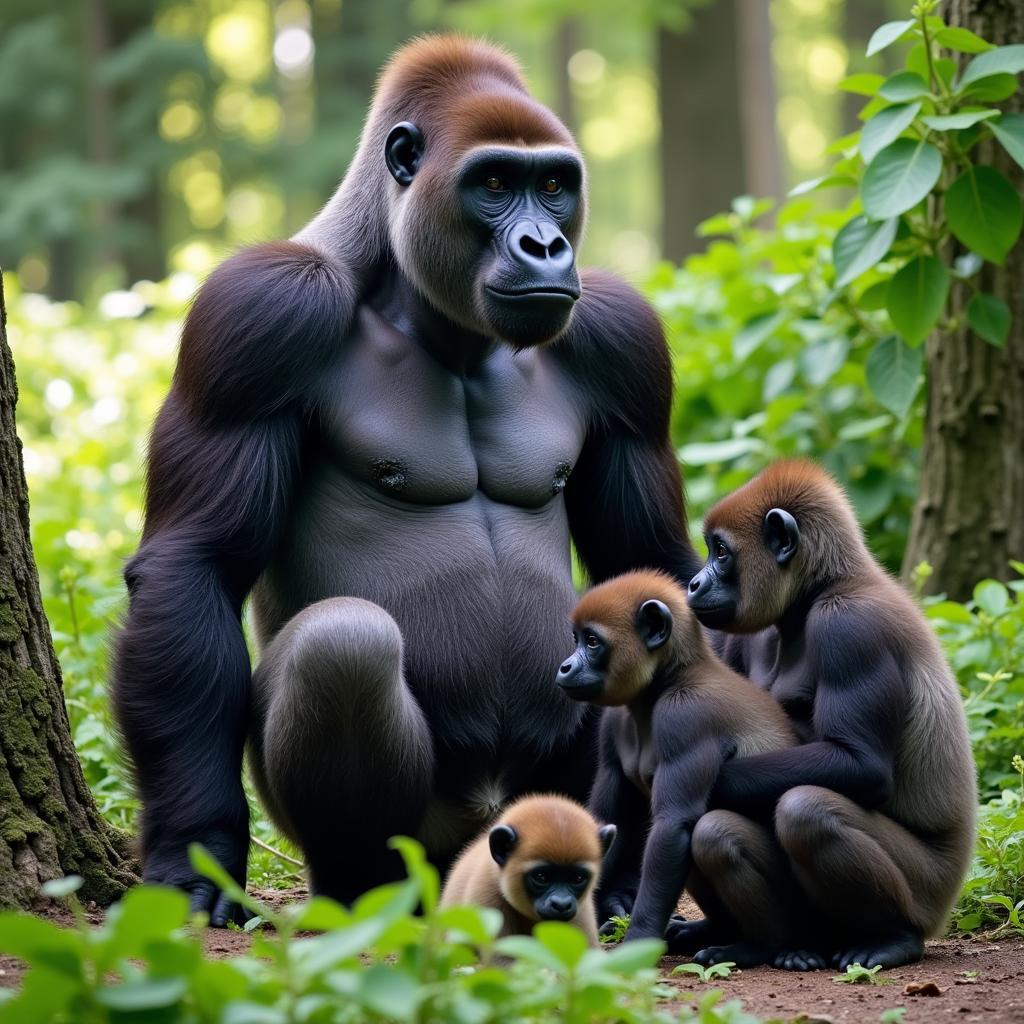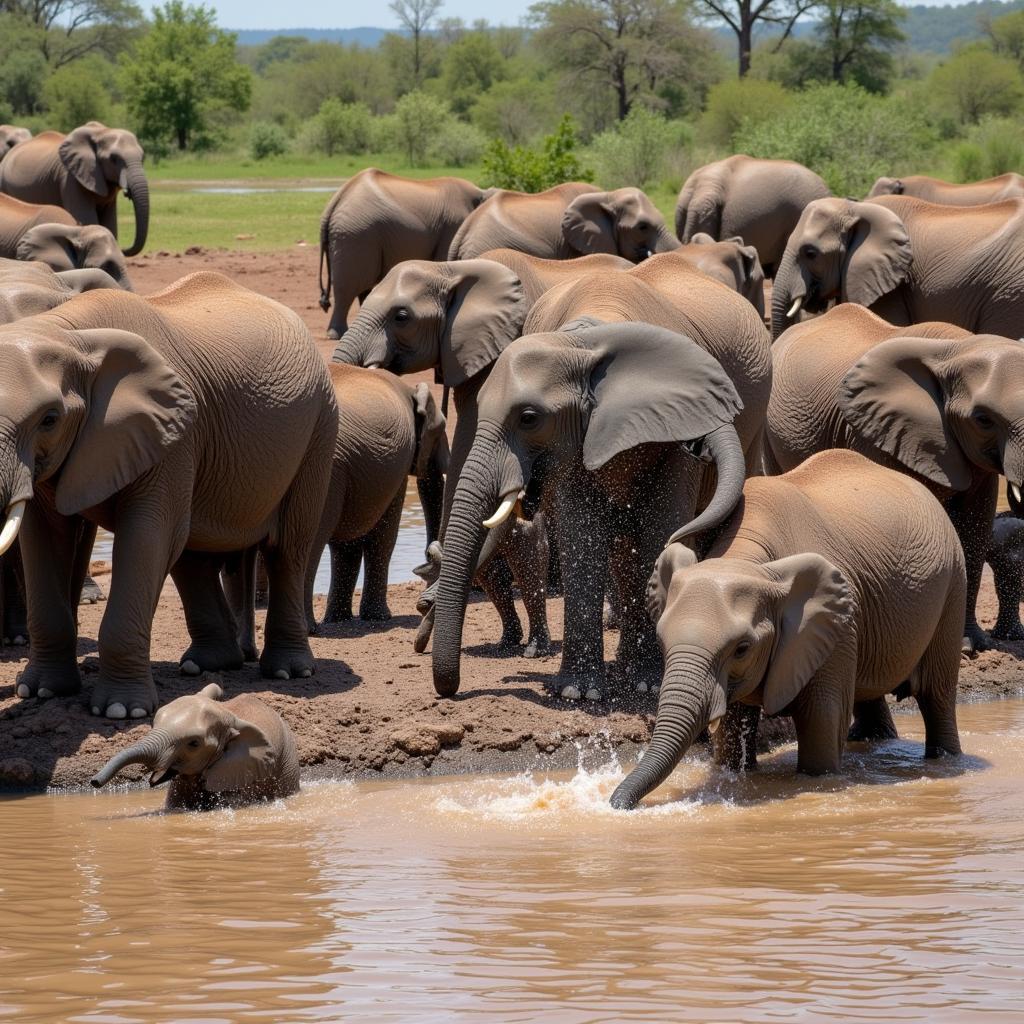The African Animal Alphabet: A Wild Journey From A to Z
Africa, a continent teeming with life, boasts a diverse and spectacular animal kingdom. From the towering giraffes to the stealthy leopards, the African landscape is an awe-inspiring tapestry of wildlife. Let’s embark on a captivating journey through the African Animal Alphabet, discovering fascinating creatures that call this extraordinary continent home.
A is for African Wild Dog
These highly social animals, also known as painted wolves, are known for their striking, irregular spots of brown, black, and white fur. With their lean build and powerful legs, African wild dogs are incredibly efficient hunters, boasting a success rate of up to 80%.
B is for Black Rhinoceros
Critically endangered, the black rhinoceros is an iconic symbol of Africa’s wildlife. Despite its name, its skin color can range from brown to gray. The black rhino is distinguished by its prehensile upper lip, which it uses to grasp leaves and twigs for browsing.
C is for Cheetah
Known as the fastest land animal, the cheetah can reach speeds of up to 70 miles per hour in short bursts. Their slender body, long legs, and spotted coat make them easily recognizable inhabitants of the African plains.
 Cheetah cubs playing
Cheetah cubs playing
D is for Dung Beetle
While not as glamorous as some of their animal counterparts, dung beetles play a vital role in the ecosystem. As their name suggests, they feed on dung, burying and recycling it, which helps to improve soil fertility and control parasites.
E is for Elephant
The African elephant, the largest land mammal on Earth, holds a place of great cultural significance in Africa. They are highly intelligent and social animals, living in herds led by a matriarch.
F is for Fennec Fox
This small, nocturnal fox is easily identifiable by its distinctively large ears, which help to dissipate heat and locate prey in the desert environment.
G is for Gorilla
Found in the rainforests of Central Africa, gorillas are the largest of the living primates. These gentle giants are highly intelligent and share about 98% of their DNA with humans.
 Silverback gorilla with family group
Silverback gorilla with family group
H is for Hippopotamus
The third-largest land mammal, after elephants and white rhinos, hippopotamuses are surprisingly agile despite their bulky appearance. They are highly territorial and spend much of their day submerged in rivers and lakes.
I is for Impala
These graceful antelopes are known for their incredible leaping abilities. When alarmed, impalas can jump up to 10 feet high and 30 feet forward, a remarkable display of agility that helps them to evade predators.
J is for Jackal
Often found scavenging, jackals are opportunistic omnivores that play an important role in the ecosystem by removing carcasses. Their distinctive howl is a haunting sound of the African night.
K is for Kori Bustard
The heaviest bird capable of flight, the Kori bustard is an impressive sight. Males can weigh up to 40 pounds and have a wingspan of up to 8 feet. They are often found strutting across grasslands, displaying their elaborate courtship rituals.
L is for Lion
The “king of the jungle,” the lion is an iconic symbol of strength and power. These social cats live in prides, with females typically doing most of the hunting.
M is for Meerkat
These small mongooses are known for their upright posture and inquisitive nature. Meerkats live in social groups called mobs and cooperate to raise their young and watch for predators. For more intriguing animals starting with M, check out this insightful article on African animals names starting with m.
N is for Nile Crocodile
The largest freshwater predator in Africa, the Nile crocodile is a formidable reptile that can grow up to 20 feet long. They are ambush predators, lurking beneath the water’s surface, waiting for unsuspecting prey.
O is for Ostrich
The largest bird in the world, the ostrich is flightless but incredibly fast on land. They can sprint at speeds of up to 43 miles per hour and deliver powerful kicks with their strong legs.
P is for Pangolin
Often mistaken for reptiles, pangolins are actually mammals. Their bodies are covered in overlapping scales, which provide protection from predators. Sadly, they are the most trafficked mammal in the world due to the demand for their scales and meat.
Q is for Quagga
Sadly, the quagga, a subspecies of the plains zebra, is extinct. It was characterized by its unique stripes, which faded toward its brown hindquarters. The last known quagga died in captivity in 1883.
R is for Ring-Tailed Lemur
Endemic to the island of Madagascar, ring-tailed lemurs are easily recognizable by their long, black and white ringed tails. They are social animals, living in groups of up to 30 individuals.
S is for Serval
This medium-sized wild cat is known for its long legs, spotted coat, and large ears. Servals are skilled hunters, using their exceptional hearing to locate rodents and other small prey.
T is for Thomson’s Gazelle
Named after explorer Joseph Thomson, this gazelle is a common sight on the African savanna. They are known for their incredible speed and agility, often seen leaping and bounding across the plains.
U is for Uganda Kob
This elegant antelope is found in grasslands and woodlands across East Africa. Uganda kobs are known for their distinctive reddish-brown coats and the long, curved horns of the males.
V is for Vervet Monkey
These small, social monkeys are a common sight throughout sub-Saharan Africa. Vervet monkeys are known for their diverse vocalizations, including distinct alarm calls for different predators.
W is for Warthog
With their distinctive warts on their faces and large tusks, warthogs are unforgettable members of the African animal kingdom. They are often seen grazing on grasses and rooting for tubers with their snouts.
X is for Xhosa Long-Horned Cattle
Indigenous to South Africa, Xhosa long-horned cattle are known for their impressive, curved horns, which can reach up to six feet in length. They are an important part of Xhosa culture, used for both their meat and milk.
Y is for Yellow Baboon
Also known as the yellow papio, these baboons are found in southeastern Africa. They are named for their yellowish-brown fur and are highly adaptable, living in a variety of habitats from grasslands to forests.
Z is for Zebra
Perhaps one of the most iconic African animals, zebras are instantly recognizable by their black and white stripes. Each zebra’s stripe pattern is unique, much like human fingerprints.
The African animal alphabet is a testament to the incredible biodiversity of this mesmerizing continent. From the majestic to the minuscule, every creature plays a crucial role in maintaining the delicate balance of Africa’s ecosystems. This alphabetical exploration is just a glimpse into the wonders that await those who venture to discover the magic of African wildlife.
FAQs
What are some other interesting African animals not included in the alphabet?
Africa is home to a vast array of wildlife, including aardvarks, African fish eagles, bonobos, chimpanzees, hyenas, leopards, and many more!
Why is it important to protect African wildlife?
Protecting African wildlife is crucial for preserving biodiversity, maintaining healthy ecosystems, and ensuring the well-being of both animals and humans. Many species face threats from habitat loss, poaching, and climate change.
What can I do to help conservation efforts in Africa?
You can support reputable organizations working in wildlife conservation, raise awareness about the plight of endangered species, and make responsible choices as a traveler or consumer to minimize your impact on the environment.
Where can I learn more about African animals?
For a comprehensive list of African animals, explore this fascinating resource: african animals list a to z.
Dive deeper into the intriguing world of African insects with this captivating A to Z guide: african insects az.
Discover the vibrant tapestry of African culture through their symbolic flags, alphabetically arranged in this insightful article: african flags in alphabetical order.
Embark on a linguistic adventure by exploring the diverse writing systems of the continent with this informative guide on african alphabets.
Let’s continue to celebrate and protect the remarkable diversity of the African animal alphabet, ensuring that future generations can marvel at the wonders of this extraordinary continent. For any inquiries or assistance regarding African wildlife and conservation efforts, do not hesitate to contact us.

